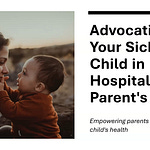Hip dysplasia, also known as developmental dysplasia of the hip (DDH), is a condition where the hip joint doesn't develop properly. It can range from mild instability to full dislocation. Early detection and treatment are crucial for the best outcomes.
Screening and Diagnosis
In the UK and Ireland, newborns are routinely screened for hip dysplasia during their initial check-up and at the 6-8 week health review. Healthcare providers check for signs such as:
A 'clicky hip' when moving the legs.
Uneven leg lengths.
Restricted movement in one leg.
Asymmetrical skin creases around the thighs or buttocks.
If any concerns arise, your baby may be referred for an ultrasound scan to confirm the diagnosis.
Treatment Options
Treatment varies depending on the severity and the baby’s age.
1. Harness Treatment:
If diagnosed early (within the first 6 months), a Pavlik harness is often the first-line treatment. This device holds your baby’s hips in a stable position, allowing the hip joint to develop properly.
The harness is typically worn for 6-12 weeks, sometimes longer, depending on progress.
During this time, your baby may need frequent check-ups to monitor their hip development.
Complications of the Pavlik Harness:
Skin Irritation: Prolonged use of the harness can cause skin irritation, particularly in the areas where the straps come into contact with the skin. It's important to check regularly for redness or sores.
Reduced Circulation: If the harness is too tight, it can restrict blood flow to the legs or feet, leading to swelling or discoloration. Always ensure the harness is fitted properly and check your baby’s legs frequently.
Joint Stiffness: Some babies may develop stiffness in the hip joint or leg muscles if the harness is worn for an extended period, though this is less common.
Discomfort: In rare cases, babies may become uncomfortable or fussy while wearing the harness. If this happens, speak with your healthcare provider to ensure proper fit and comfort.
2. Hip Spica Cast:
If a harness is unsuccessful or if DDH is detected later, a hip spica cast may be necessary. This is a rigid cast that holds the hip in the correct position to allow proper growth.
A hip spica is usually worn for 3-6 months, with changes every 6 weeks.
3. Surgery:
In severe cases or if non-surgical treatments fail, surgery may be required. This can involve repositioning the hip joint or reshaping the hip socket. After surgery, a hip spica cast is often applied to maintain the corrected position during healing.
Coping Strategies for Parents
Caring for a child with hip dysplasia can be challenging, but these strategies can help:
Stay Informed: Understanding your child’s condition can ease anxiety. Resources like the International Hip Dysplasia Institute provide helpful insights.
Connect with Support Groups: Groups such as Steps Charity Worldwide and Hip Dysplasia Ireland provide emotional support and practical advice from parents who have experienced the same journey.
Focus on Routine: Establish consistent feeding, bathing, and sleeping routines to reduce stress.
Seek Professional Guidance: Physiotherapists and occupational therapists can offer helpful techniques for handling your child comfortably.
Surgical Outcomes
The majority of children who undergo surgery for hip dysplasia recover well, with excellent long-term outcomes. Research indicates that early intervention greatly improves hip joint function. Studies in journals such as the Journal of Pediatric Orthopaedics and The Bone & Joint Journal emphasize the importance of follow-up care to ensure healthy hip development.
Caring for Your Baby During Treatment
Changing Nappies:
With a Pavlik harness, nappy changes are usually straightforward. Ensure the harness straps stay dry and clean.
With a hip spica cast, you will need special nappy techniques. Often, a smaller nappy is placed inside the cast, with a larger one over the top for additional protection against leaks.
Dressing Your Baby:
For babies in a Pavlik harness, loose-fitting clothes such as babygrows or rompers with poppers are ideal.
For babies in a hip spica cast, look for adaptive clothing designed to fit around the cast.
Emotional Support and Resources
Dealing with a DDH diagnosis can be overwhelming, but there are excellent resources and support networks to help you:
Steps Charity Worldwide (UK-based charity offering DDH resources and support).
My Hippy Baby UK & Ireland DDH Support Group (Hip Dysplasia)
Private group on Facebook
Final Thoughts
While a hip dysplasia diagnosis can be worrying, early treatment often leads to excellent outcomes. With the right support and resources, you can ensure your baby receives the best care possible. Don’t hesitate to reach out to healthcare professionals or support groups for guidance during this journey.












Share this post